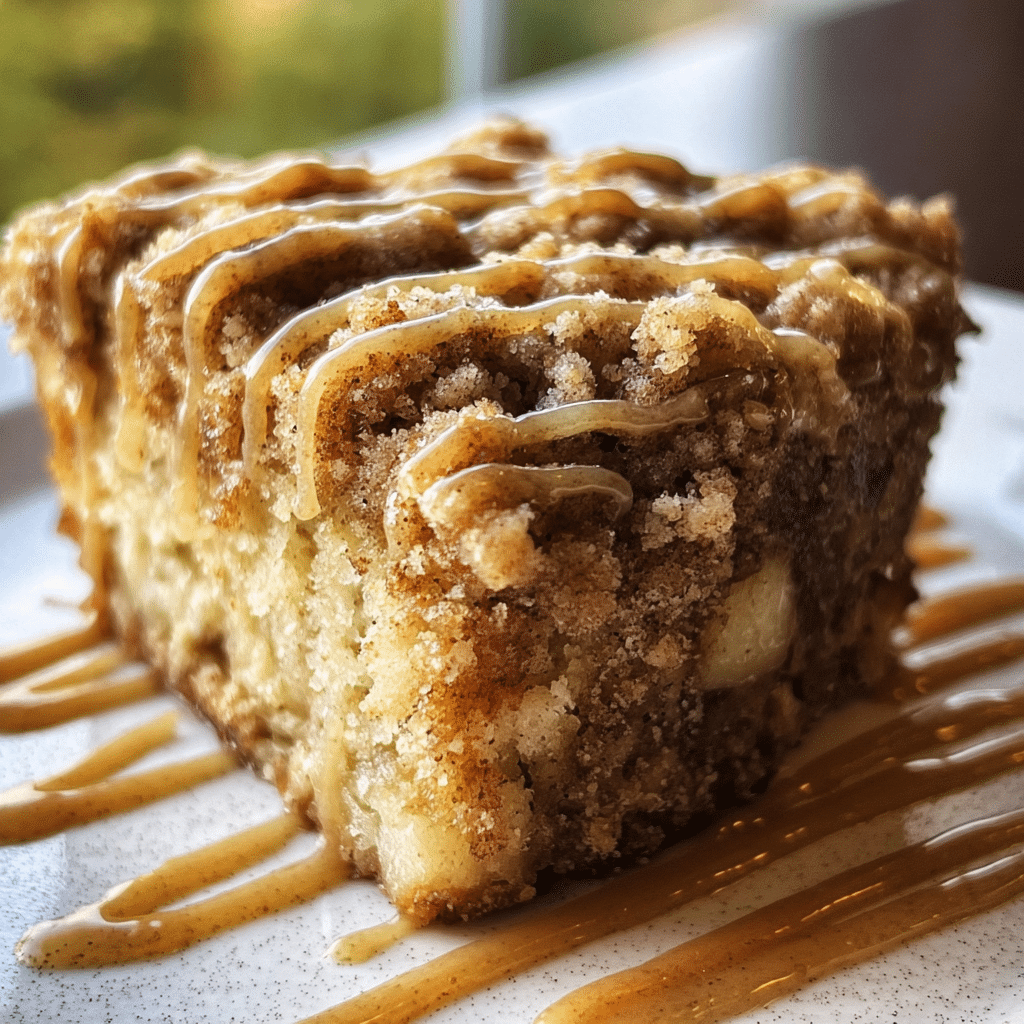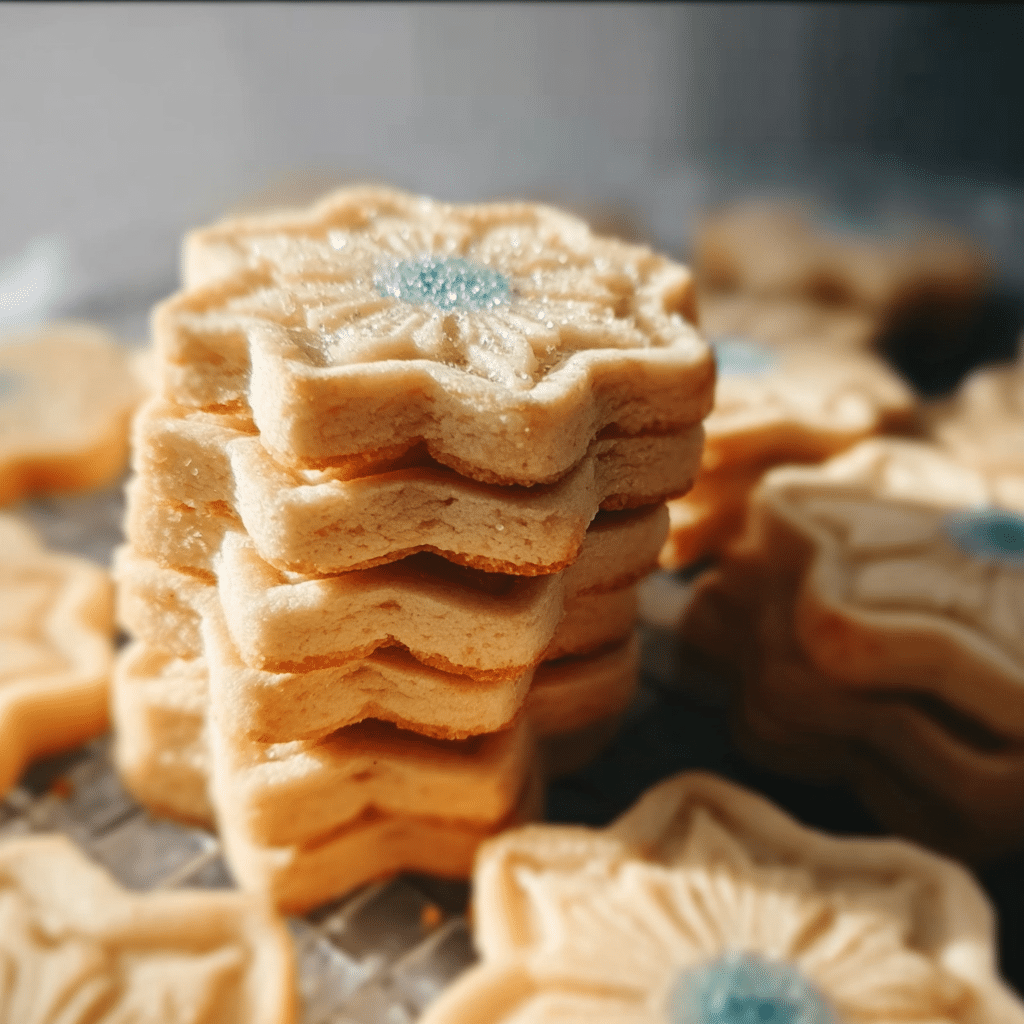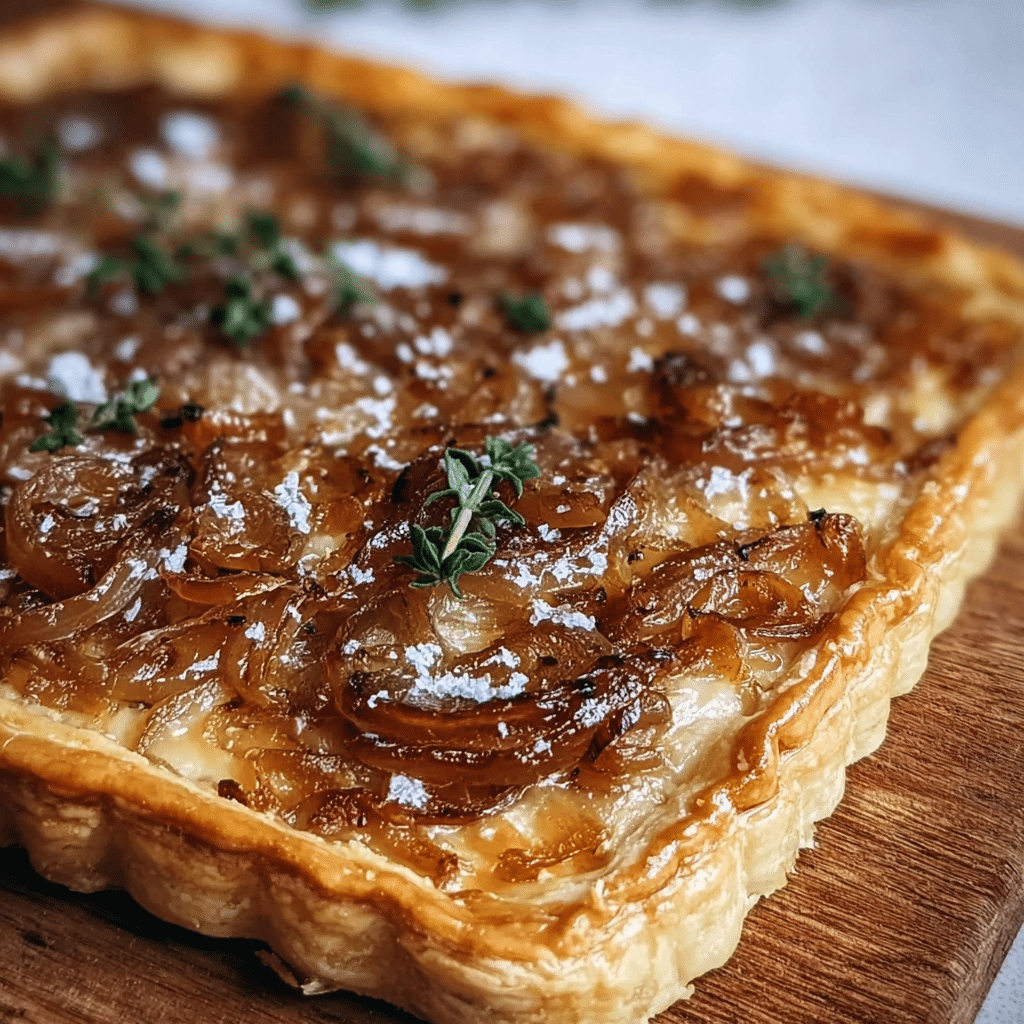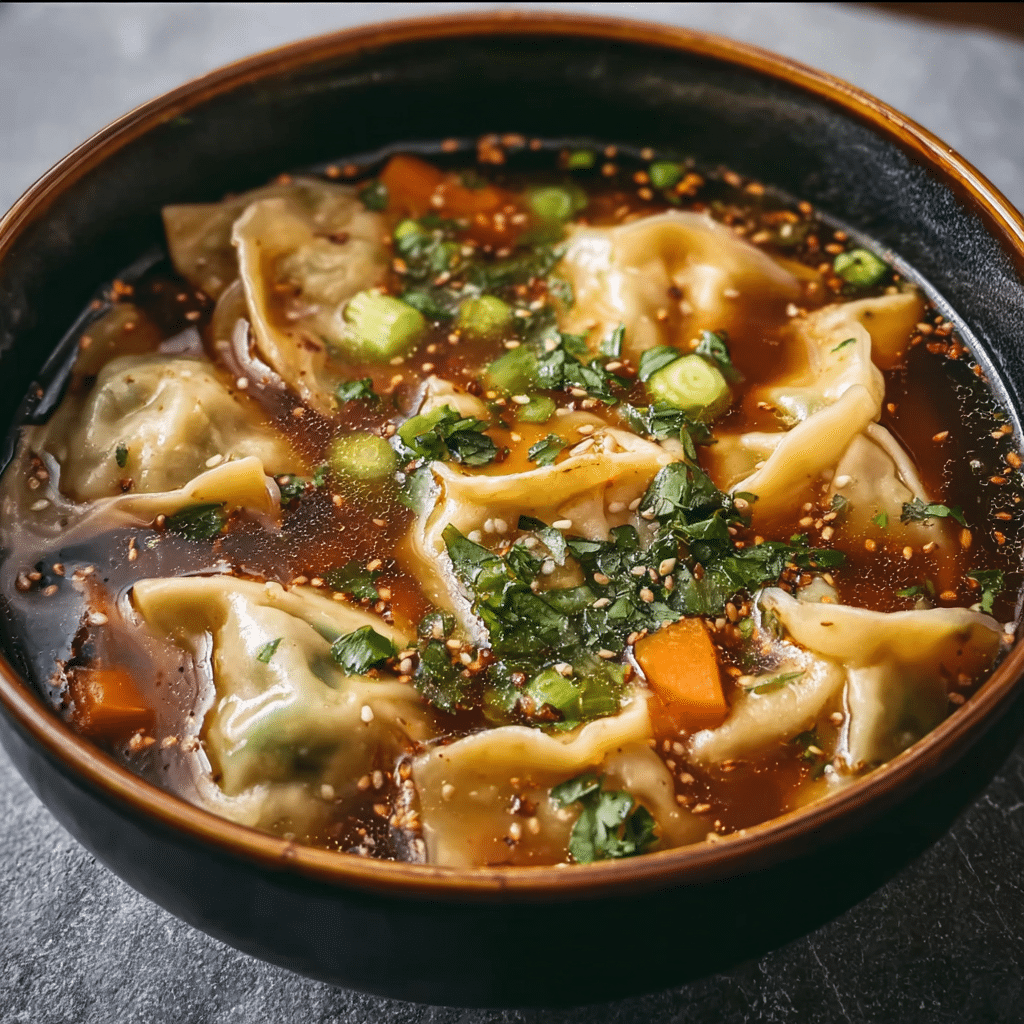Southern black eyed peas have a unique place in my heart and kitchen, and it all began on a chilly New Year’s Day in the South. Growing up, my grandmother would always prepare a pot of these little legumes, insisting that they would bring prosperity and luck in the coming year. I remember the warmth of the kitchen, the aroma of smoked ham hocks simmering with the peas, and my family gathered around the table, ready to dig in. That special dish has now become a staple in my own home, a comforting reminder of family traditions and the simple joys of life.

As I learned to cook, I experimented with various recipes, but nothing compared to the authenticity of southern black eyed peas. The dish not only holds nostalgic value but also reflects a rich cultural history that dates back centuries. Traditionally associated with Southern cuisine and African American culture, these little peas have been a symbol of good luck, especially when eaten on New Year’s Day. The idea is that the round shape represents coins, and the more you eat, the more prosperity you invite into your life. It’s fascinating how a simple dish can carry such profound meanings across generations.
The Story Behind This Recipe
What makes southern black eyed peas incredibly special is their versatility and ability to adapt to the cook’s preferences. While my grandmother stuck to a classic recipe passed down through the family, I found joy in adding my own twist by incorporating different spices or cooking methods. This dish is not just about the ingredients; it’s about the memories and the love that goes into preparing it. I’ve hosted countless dinner parties where southern black eyed peas have taken center stage, and each time, they spark conversations and laughter around the table.
For busy families, this recipe is a lifesaver. It can be prepared in under an hour, making it perfect for any weeknight dinner. The peas cook quickly, and with a few simple ingredients like onions, garlic, and a smoked meat option, you can create a delicious meal in no time. I often pair them with cornbread and greens, making for a wholesome, filling dinner that satisfies everyone’s cravings. Plus, the leftovers are even better the next day!
Seasonally, southern black eyed peas shine during the colder months, especially around the holidays. However, they can be enjoyed year-round, providing warmth and comfort no matter the season. I’ve even found myself cooking them in the summer, throwing in fresh herbs from my garden, creating a lighter version that is just as delightful.
Emotional connections to this dish run deep. It’s not just a meal; it’s a vessel for memories, stories, and the spirit of togetherness. Whenever I prepare southern black eyed peas, I think of my grandmother’s laughter, her hands skillfully stirring the pot, and the love that filled our home. It’s a reminder that no matter how busy life gets, there’s always time to gather around the table and share a meal with loved ones.
In this guide, readers will learn not only how to prepare southern black eyed peas but also the rich history, cultural significance, and variations that make this dish a cherished part of Southern cuisine. Whether you’re a seasoned cook or just starting your culinary journey, this recipe will undoubtedly become a staple in your home, just as it has been in mine.
The Rich History and Cultural Significance of southern black eyed
The rich history and cultural significance of southern black eyed peas cannot be overstated. Originating from Africa, these peas were brought to America through the transatlantic slave trade, where they became integral to African American cuisine. Southern black eyed peas are often associated with the resilience and creativity of enslaved people, who transformed limited resources into flavorful, nutritious meals. Over time, these peas became a staple in Southern households, symbolizing good fortune and the hope for better times ahead.
Origins and History
Historically, southern black eyed peas were cultivated in the southern United States, particularly in states like Georgia, Alabama, and Mississippi. They thrive in warm climates and are known for their adaptability to various soil types. The peas are not only delicious but also easy to grow, making them a perfect crop for home gardens. They became a staple in the diets of both enslaved people and poor white families, who relied on this nutritious legume as a source of sustenance.
In the traditional Southern New Year’s Day celebration, eating black eyed peas is a ritual believed to bring prosperity and good luck for the year ahead. This custom can be traced back to the Civil War era when Union soldiers destroyed crops, and the black eyed peas remained untouched, considered animal feed rather than food for humans. Those who survived on black eyed peas during this difficult time viewed them as a symbol of hope and resilience. Since then, the tradition has been passed down through generations, solidifying the dish’s role in Southern culture.
Cultural Significance
Southern black eyed peas have evolved into a beloved dish, particularly during celebrations and gatherings. They are often featured in New Year’s Day meals alongside collard greens and cornbread, representing wealth and prosperity. The black eyed peas symbolize coins, while the greens represent paper money, and the cornbread symbolizes gold. This trio of foods is a culinary tradition that embodies the spirit of Southern hospitality and the importance of family meals.
Throughout the years, different regional variations have emerged, allowing for creative interpretations of the classic dish. Some Southern families add spices like cayenne pepper or paprika for a kick, while others prefer a milder flavor profile. Renowned chefs have also embraced black eyed peas, elevating them with gourmet techniques and ingredients, showcasing their versatility beyond traditional preparations.
Nutritional Benefits
Beyond their cultural significance, southern black eyed peas are packed with nutritional benefits. They are an excellent source of protein, fiber, and essential vitamins and minerals. Rich in folate, iron, and magnesium, they contribute to a balanced diet and promote overall health. The high fiber content helps in digestion, making them a great choice for those looking to maintain a healthy lifestyle. Incorporating southern black eyed peas into meals can also help stabilize blood sugar levels and support heart health.
In conclusion, southern black eyed peas are more than just a delicious dish; they are a representation of history, culture, and familial bonds. Whether you’re preparing them for a special occasion or a cozy weeknight dinner, they bring with them a sense of tradition and warmth that resonates with many. By understanding the rich backstory and cultural context of southern black eyed peas, one can truly appreciate the depth and significance of this beloved Southern staple.
Essential Ingredients for Perfect southern black eyed
When it comes to preparing a soul-satisfying dish like southern black eyed peas, the ingredients play a crucial role in achieving that authentic taste. Each component contributes its unique flavor and texture, making the final dish a delightful experience. Let’s dive into the essential ingredients you’ll need to create the perfect batch of southern black eyed peas.
Essential Ingredients
- 1 pound dried black-eyed peas
- 1 tablespoon vegetable oil
- 1 medium onion, chopped
- 5 cloves garlic, minced
- 1 pound smoked ham hocks
- 6 cups water
- 1 tablespoon seasoned salt
- 1 teaspoon onion powder
- 1 teaspoon ground cumin
- 1 teaspoon freshly ground black pepper
- 1/4 teaspoon crushed red pepper
- 3 bay leaves

Southern Black Eyed Peas
Ingredients
- 1 pound dried black-eyed peas
- 1 tablespoon vegetable oil
- 1 medium onion, chopped
- 5 cloves garlic, minced
- 1 pound smoked ham hocks
- 6 cups water
- 1 tablespoon seasoned salt
- 1 teaspoon onion powder
- 1 teaspoon ground cumin
- 1 teaspoon freshly ground black pepper
- ¼ teaspoon crushed red pepper
- 3 bay leaves
Instructions
- Gather all ingredients.
- Soak black-eyed peas in a bowl of water for at least 2 hours, or overnight.
- A large glass bowls with black eyed peas soaking in water
- Dotdash Meredith Food Studios
- Heat oil in a large, heavy saucepan over medium heat. Add onion and garlic; sauté until onion is translucent, about 5 minutes.
- A large pan with chopped onion and garlic
- Dotdash Meredith Food Studios
- Add ham hocks and water; bring to a boil. Cover, reduce the heat to a simmer, and cook for 1 hour.
- A large pan with ham hocks, chopped onion, and water
- Dotdash Meredith Food Studios
- Drain peas; add to the pan along with seasoned salt, onion powder, cumin, black pepper, red pepper, and bay leaves. Bring to a boil. Cover, reduce the heat to a simmer, and cook for 1 hour.
- A large pot with bay leaves, spices, soaked black eyed peas, water, and ham hocks
- Dotdash Meredith Food Studios
- Uncover the pan and cook until peas are tender, about 30 more minutes. Remove bay leaves and ham hocks before serving.
Let’s explore the role and importance of each ingredient in this delectable dish:
Dried Black-Eyed Peas: The star of the show! Dried black-eyed peas are rich in protein and fiber, making them a nutritious choice. When cooked, they have a creamy texture and a slightly earthy flavor. Look for beans that are whole, firm, and free of blemishes. Avoid any that appear shriveled or discolored, as these may not cook well.
Vegetable Oil: A splash of vegetable oil is essential for sautéing the onion and garlic. It helps to develop the base flavors of the dish. For a more robust flavor, you can also consider using olive oil or bacon grease, which can add a delightful richness.
Onion: A medium onion, chopped finely, introduces sweetness and depth to the dish. Onions become sweet and savory when cooked, providing a flavor foundation. Opt for yellow onions for a balance of sweetness and sharpness.
Garlic: Minced garlic elevates the flavor profile, adding a warm and aromatic touch. Fresh garlic is always preferable, as it offers a more vibrant flavor than pre-minced options. Aim for firm cloves free of sprouting.
Smoked Ham Hocks: The ham hocks provide a smoky, meaty flavor that enhances the southern black eyed peas. You can substitute with smoked turkey legs or bacon if you’re looking for alternatives, but be sure to retain that smoky essence.
Water: The cooking liquid is essential for rehydrating the peas and creating a broth that’s full of flavor. Use filtered water for the best taste, as tap water with strong chlorine or mineral flavors can impact the final dish.
Seasoned Salt: This ingredient adds a combination of saltiness and flavor from herbs and spices. If you’re watching your sodium intake, consider using low-sodium options or adjust the salt levels to your personal taste.
Onion Powder, Ground Cumin, Black Pepper, and Crushed Red Pepper: These spices enhance the dish’s flavor complexity. Onion powder provides a concentrated onion taste without the texture, while cumin adds a warm, earthy note. Black pepper contributes heat, and crushed red pepper brings a hint of spice. Adjust these seasonings according to your palate.
Bay Leaves: These aromatic leaves infuse the broth with a subtle depth of flavor. Remember to remove them before serving, as they are not meant to be eaten.
Shopping Tips
When sourcing your ingredients for southern black eyed peas, consider shopping at local farmers’ markets or specialty grocery stores for the best quality. Fresh produce will significantly enhance your dish, especially for the onion and garlic. Dried black-eyed peas can often be found in the bulk section, allowing you to purchase exactly what you need.
For the ham hocks, check the meat section of your grocery store. If you’re aiming for organic, make sure to look for labels that indicate no antibiotics or hormones. When selecting spices, fresh ground is always better. Look for whole spices that you can grind at home for maximum flavor.
Substitutions and Alternatives
If you have dietary restrictions or preferences, there are several substitutions you can consider. For vegans or vegetarians, omit the ham hocks and replace them with smoked paprika or liquid smoke to impart a smoky flavor without meat. Additionally, veggie broth can be used instead of water to enhance the taste.
For those with gluten sensitivities, rest assured that all the ingredients listed are naturally gluten-free. Just check your seasoned salt for any hidden gluten sources.
When it comes to storage, dried black-eyed peas can last for years when kept in a cool, dry place, while fresh vegetables should be used within a week for optimal freshness. Properly stored, your ingredients will ensure that your southern black eyed peas are nothing short of spectacular.
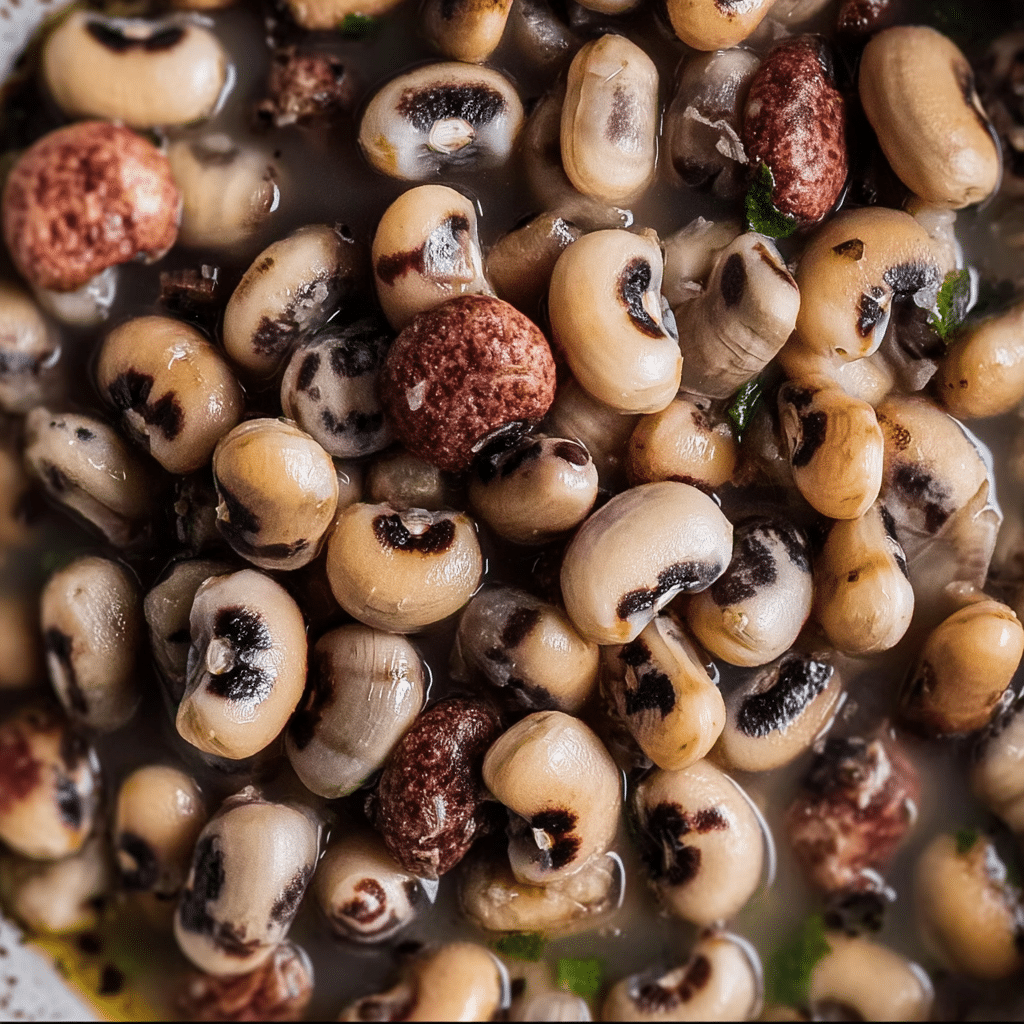
In conclusion, gathering these essential ingredients with care will set the stage for a delicious pot of southern black eyed peas. Each component plays a pivotal role in crafting a dish that is not only rich in flavor but also steeped in history and tradition.
Detailed Step-by-Step southern black eyed Cooking Instructions
Cooking southern black eyed peas is not just a culinary task; it’s a cherished tradition that brings families together. The process, while straightforward, involves specific techniques that ensure your dish turns out perfectly every time. Let’s break down the detailed step-by-step instructions for cooking the best southern black eyed peas.
Preparation Steps
- Sort and Rinse the Black-Eyed Peas: Begin by sorting through the dried black-eyed peas to remove any debris or discolored peas. This step is crucial as it ensures that your final dish is not only tasty but also visually appealing. After sorting, rinse the peas thoroughly under cold water to remove any dust or dirt.
- Soak the Peas (Optional): While soaking is not strictly necessary, it can reduce cooking time and enhance texture. If you choose to soak, cover the peas with water and let them sit for at least 4 hours or overnight. Drain and rinse before cooking.
- Prep Your Aromatics: Chop the onion and mince the garlic. Having everything ready to go (mise en place) makes the cooking process smoother and more enjoyable. The aromas of onion and garlic sautéing together will set the stage for a delightful dish.
Cooking Process
- Heat the Oil: In a large pot or Dutch oven, heat 1 tablespoon of vegetable oil over medium heat. You’ll know it’s ready when the oil shimmers slightly. This is the moment to add your aromatics.
- Sauté the Onion and Garlic: Add the chopped onion to the pot, stirring frequently for about 5 minutes until it becomes translucent. Then, add the minced garlic and sauté for another minute until fragrant. Be cautious not to let the garlic burn, as it can turn bitter.
- Add the Ham Hocks: Place the smoked ham hocks into the pot with the sautéed onion and garlic. This step is essential as the fat from the ham hocks will infuse the dish with a smoky richness.
- Incorporate the Peas: Add the rinsed black-eyed peas to the pot, followed by 6 cups of water. Stir to combine all the ingredients. The liquid should cover the peas adequately, allowing them to cook evenly.
- Season the Dish: Sprinkle in the seasoned salt, onion powder, ground cumin, black pepper, crushed red pepper, and toss in the bay leaves. These spices will create a beautiful flavor profile that is characteristic of southern black eyed peas.
- Bring to a Boil: Increase the heat to high and bring the mixture to a rolling boil. Once boiling, reduce the heat to low, cover the pot, and let it simmer gently. You’ll want to stir occasionally and monitor the liquid level.
- Simmer and Cook: Allow the peas to simmer for about 30 minutes, or until they are tender. The key here is to taste test; you want them to be creamy but not mushy. If the liquid evaporates too quickly, you can add more water as needed.
Final Assembly
- Remove the Ham Hocks: After the peas have reached the desired tenderness, carefully remove the ham hocks from the pot. Allow them to cool slightly before shredding any meat off the bones to mix back into the peas. This adds even more flavor and texture.
- Taste and Adjust Seasoning: Before serving, taste the dish and adjust the seasoning as necessary. You may want to add a pinch more salt, black pepper, or red pepper flakes for extra heat.
- Serve Hot: Ladle the southern black eyed peas into bowls and serve hot. They pair wonderfully with cornbread or over rice. Don’t forget to share with family and friends, as this dish is meant to bring people together!
Throughout the cooking process, keep an eye out for visual cues: the peas should be tender but still hold their shape, and the broth should be rich and flavorful. Avoid common mistakes such as overcooking the peas or neglecting to check the seasoning until the end. Remember, cooking is an art, and with practice, you’ll master the craft of making southern black eyed peas.
By following these detailed instructions, you will not only create a delicious dish but also enjoy the process of cooking. The aromas, the flavors, and the joy of sharing a meal with loved ones are what make this experience truly special. Happy cooking!
Professional Tips and Techniques for southern black eyed
When it comes to preparing the perfect batch of southern black eyed peas, there are several professional tips and techniques that can elevate your dish from ordinary to extraordinary. Having spent countless evenings in my kitchen experimenting with this beloved Southern staple, I’ve gathered a treasure trove of insights that I’m excited to share with you. So, roll up your sleeves, and let’s dive into the world of southern black eyed peas.
Professional Techniques
One of the first things you’ll want to consider is the quality of your beans. While dried peas are traditional, I often opt for fresh or frozen when available, as they provide a vibrant flavor that dried peas sometimes lack. When using dried peas, be sure to sort through them to remove any debris or damaged peas, then rinse them under cold water. Soaking is crucial; I recommend an overnight soak to not only reduce cooking time but also to enhance the digestibility of these lovely legumes.
Cooking methods are equally important. For a traditional approach, simmering your southern black eyed peas in a flavorful broth—perhaps made with smoked ham hocks or a few slices of bacon—adds depth and richness. If you’re short on time, a pressure cooker can be your best friend. I’ve found that cooking them under pressure for about 10-15 minutes yields tender, flavorful peas without the long wait.
Don’t forget about seasoning! While salt is essential, the right spices can make all the difference. I love to start with a base of onions, garlic, and bell peppers, then add bay leaves and a sprinkle of cayenne for a little kick. Remember to add acidic elements, like a dash of vinegar or a squeeze of lemon, towards the end of cooking to brighten the flavors.
Troubleshooting Guide
Even the best cooks encounter problems, and southern black eyed peas are no exception. One common issue is cooking them too long, which can lead to mushiness. To avoid this, keep an eye on the cooking time, especially if you’re using younger, fresher peas. If you find yourself with overcooked peas, consider transforming the dish into a creamy dip by blending them with some cream cheese and spices.
Another issue is insufficient flavor absorption. If your peas are bland, there’s a chance they didn’t absorb enough of the broth’s flavor. In this case, try simmering them longer or adding a touch of liquid smoke for that characteristic Southern flavor. Remember, taste as you go! Adjusting seasonings throughout the cooking process can prevent a bland outcome.
Presentation Tips
When it comes to serving southern black eyed peas, presentation can really enhance your dish. I love serving them in a rustic bowl, garnished with freshly chopped parsley or a sprinkle of crumbled feta cheese for a Mediterranean twist. You can also pair them with cornbread or over a bed of rice, adding a splash of color to your plate.
For a more refined approach, consider layering your peas with sautéed greens, like collard or mustard greens, and topping with fried onions for a bit of crunch. This not only looks stunning but also provides various textures that make each bite interesting.
Wine and Beverage Pairings
Pairing beverages with your southern black eyed peas can elevate your dining experience. A light-bodied red wine, like a Pinot Noir, complements the earthy flavors of the peas beautifully. If you prefer white wine, a crisp Sauvignon Blanc can provide a refreshing contrast. For a non-alcoholic option, consider serving sweet tea or a homemade lemonade, both of which are classic Southern beverages that bring a hint of sweetness to balance the savory dish.
Finally, if you’re hosting a gathering, consider making a large batch of southern black eyed peas ahead of time. They tend to taste even better the next day as the flavors meld together. Store them in the refrigerator for up to four days, or freeze them for longer storage. Just be sure to leave some space in the container for expansion when freezing!
In conclusion, mastering the art of cooking southern black eyed peas involves understanding the techniques, troubleshooting issues, and presenting your dish in an appealing way. With these tips and a little practice, you’ll be well on your way to serving up a Southern classic that will impress family and friends alike.
Creative Variations and Adaptations of southern black eyed
As a passionate cook who loves to experiment in the kitchen, I can tell you that the beauty of southern black eyed peas lies in their versatility. While the traditional recipe is delightful on its own, there are endless possibilities for creative variations and adaptations that can cater to different tastes and dietary needs. Join me as we explore some exciting twists on this classic Southern dish.
Seasonal Variations
One of my favorite ways to adapt southern black eyed peas is by incorporating seasonal ingredients. In the summer, fresh herbs like basil or cilantro can add a burst of flavor. Toss in some diced tomatoes or corn to create a refreshing salad that’s perfect for warm weather gatherings. In the fall, consider adding diced butternut squash or sweet potatoes for a comforting dish that showcases the harvest.
Another seasonal touch is to add greens—like spinach or collard greens—during the winter months. They add not only nutritional value but also a lovely color contrast to the dish. I often prepare a warm salad by mixing cooked southern black eyed peas with sautéed greens, a drizzle of olive oil, and a sprinkle of feta cheese. It’s a delicious way to celebrate the changing seasons.
Dietary Adaptations
For those with dietary restrictions, southern black eyed peas can easily be adapted. If you’re following a vegan diet, simply omit the bacon or ham and use vegetable broth for a flavorful base. You can also enhance the dish with smoked paprika or liquid smoke to mimic that smoky flavor without using meat.
For those on a keto diet, the good news is that black eyed peas are relatively low in carbs compared to other legumes. However, if you want to reduce the carb content even further, consider using cauliflower rice instead of regular rice when serving. This not only lowers the carb count but also adds a delightful texture to your meal.
Creative Twists
If you’re feeling adventurous, why not try an international fusion variation of southern black eyed peas? I love making a Caribbean-inspired dish by adding coconut milk, jerk seasoning, and pineapple chunks. The tropical flavors create a vibrant, flavorful dish that’s perfect for summer barbecues.
Another fun twist is to turn your southern black eyed peas into a hearty soup. Start with a base of sautéed onions, carrots, and celery, then add your cooked peas along with vegetable or chicken broth, seasonings, and any leftover vegetables you have on hand. This is a perfect way to use up odds and ends in your fridge and turn them into a comforting meal.
If you have leftovers—though I doubt you will—they can be transformed into a tasty fritter. Simply mash the remaining peas, mix in some flour, spices, and an egg, then pan-fry them until golden brown. Serve with a zesty dipping sauce, and you’ll have a delightful snack or appetizer that showcases the delectable flavors of southern black eyed peas.
Finally, let’s talk about cooking methods. While simmering on the stovetop is traditional, don’t shy away from using your slow cooker or Instant Pot. These methods can save time and allow the flavors to develop slowly. I often prepare my peas in a slow cooker while I’m at work; when I return home, my house smells amazing and dinner is ready!
In summary, there are countless ways to enjoy southern black eyed peas. Whether you’re celebrating the seasons, accommodating dietary preferences, or simply experimenting with flavors, these peas are a blank canvas just waiting for your creative touch. So, gather your ingredients and let your culinary spirit soar!
Storage, Reheating, and Meal Prep for southern black eyed
When it comes to enjoying a dish as delightful as southern black eyed peas, understanding how to store, reheat, and prepare them in advance is crucial. Not only does proper storage ensure that your meal retains its delicious flavor and texture, but it also promotes food safety and reduces waste. Let’s dive into the best practices for storing southern black eyed peas, reheating them, and meal prepping for the week ahead.
Short-term Storage
Once you’ve cooked a big batch of southern black eyed peas, you may find yourself with leftovers that you want to keep for later. The key to short-term storage is to transfer the peas into airtight containers as soon as they have cooled down. This helps to prevent bacterial growth and keeps your peas fresh.
For refrigerator storage, it’s best to use glass containers with tight-fitting lids or BPA-free plastic containers. These allow you to see what’s inside and are easy to stack. I always make sure to label my containers with the date I prepared the dish so I can keep track of how long they’ve been stored. Generally, southern black eyed peas can be kept in the refrigerator for about 3 to 5 days.
One tip I’ve learned over the years is to separate the peas from any pot liquor or broth they were cooked in. This can prevent them from becoming mushy and losing their texture. If you do store them together, just make sure to consume them within a few days to enjoy their best quality.
Freezing and Long-term Storage
If you know you won’t be able to finish your southern black eyed peas within that 3 to 5 day window, freezing is a fantastic option. Freezing not only preserves the flavor but can also maintain the nutritional value of the peas. To freeze southern black eyed peas, follow these steps:
- Cool Completely: Allow the peas to cool completely before freezing to avoid ice crystals forming, which can affect texture.
- Portioning: Divide the peas into serving-sized portions. I often use freezer-safe bags to do this, making it easy to pull out just what I need for a meal.
- Remove Air: If using bags, squeeze out as much air as possible before sealing, as this helps prevent freezer burn.
- Label and Date: Always label your bags or containers with the date and contents.
Frozen southern black eyed peas can last for up to six months in the freezer without losing quality. When you’re ready to enjoy them, simply transfer the desired portion to the refrigerator to thaw overnight, or use the defrost setting on your microwave.
Reheating Best Practices
Reheating southern black eyed peas can be tricky if you want to maintain their original flavor and texture. Here are some methods you can use:
- Stovetop: This is my preferred method. Pour the peas into a saucepan and add a splash of water or broth to help rehydrate them. Heat over medium-low, stirring occasionally, until warmed through. This method keeps the peas tender without overcooking them.
- Microwave: Place the peas in a microwave-safe bowl, add a little liquid, cover with a microwave-safe lid or plate, and heat in short intervals, stirring in between. This prevents hot spots and ensures even heating.
- Oven: For larger portions, preheat your oven to 350°F (175°C), place the peas in a baking dish, add a splash of broth, cover with foil, and bake until heated through.
Regardless of the method, always check that your southern black eyed peas reach an internal temperature of 165°F (74°C) before serving.
In terms of food safety, it’s important to note that you should only reheat your southern black eyed peas once after cooking and freezing. Repeated heating can increase the risk of foodborne illness, so it’s better to only take out what you plan to eat.
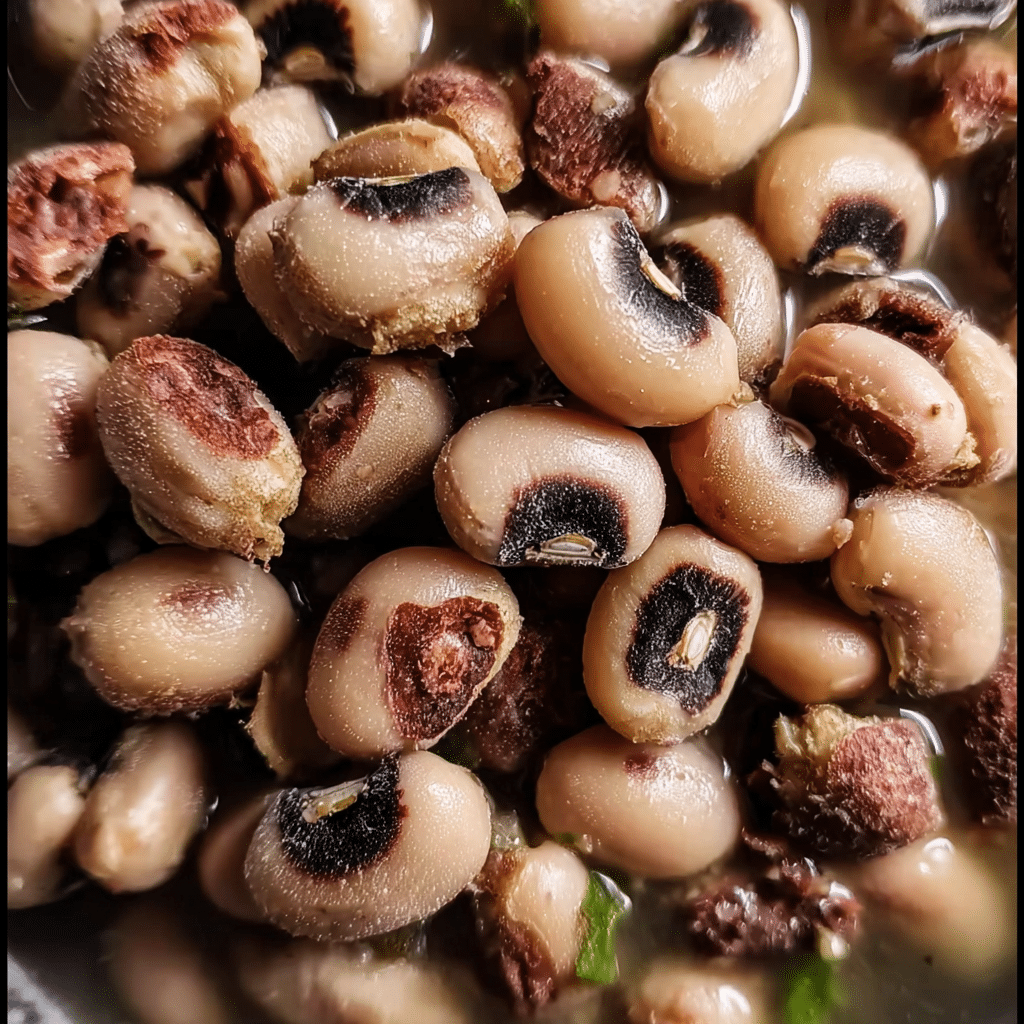
In summary, storing, freezing, and reheating southern black eyed peas is straightforward with the right techniques. By understanding how to properly handle your leftovers, you can enjoy this delightful dish for days to come while ensuring that it remains delicious and safe to eat. Happy cooking!
Nutritional Benefits and Health Information
Southern black eyed peas are not only a staple in Southern cuisine but also a nutritional powerhouse packed with health benefits. In this section, we will take a closer look at their nutritional profile, health benefits, and dietary considerations, helping you understand why these little legumes deserve a spot on your plate.
Nutritional Profile
Let’s start by breaking down the nutritional content of southern black eyed peas. A one-cup serving (approximately 170 grams) of cooked black eyed peas contains:
- Calories: About 160
- Protein: 13 grams
- Carbohydrates: 35 grams
- Fiber: 11 grams
- Fat: Less than 1 gram
- Iron: 3.5 mg (20% of the daily recommended intake)
- Folate: 180 mcg (45% of the daily recommended intake)
- Magnesium: 65 mg (16% of the daily recommended intake)
- Potassium: 600 mg (17% of the daily recommended intake)
These legumes are low in fat and high in protein and fiber, making them an excellent option for those looking to maintain a healthy diet. The fiber content not only aids digestion but also helps to keep you feeling fuller for longer, which can be beneficial if you’re watching your weight.
Health Benefits
Eating southern black eyed peas can contribute to your overall health in several ways:
- Heart Health: The high fiber content in black eyed peas can help lower cholesterol levels and improve heart health. Additionally, the potassium helps regulate blood pressure.
- Blood Sugar Control: With their low glycemic index, black eyed peas can help maintain stable blood sugar levels, making them a smart choice for those with diabetes or anyone looking to manage their energy levels throughout the day.
- Nutrient-Rich: Packed with vitamins and minerals, including folate, iron, and magnesium, southern black eyed peas are essential for energy production, cellular function, and overall well-being.
- Weight Management: The combination of high fiber and protein content makes black eyed peas a filling food choice that can help curb hunger and reduce the likelihood of overeating.
Dietary Considerations
When incorporating southern black eyed peas into your diet, consider the following dietary considerations:
- Allergens: Black eyed peas are gluten-free and suitable for most diets, including vegetarian and vegan lifestyles.
- Cooking Methods: How you prepare southern black eyed peas can affect their health benefits. Opting for healthier cooking methods—like boiling or steaming—over frying can keep the dish light and nutritious.
- Serving Suggestions: Pairing southern black eyed peas with whole grains, such as brown rice or quinoa, can create a complete protein meal, providing all the essential amino acids your body needs.
- Portion Control: While they are nutritious, be mindful of portion sizes, especially when served with rich sauces or fatty meats.
In conclusion, southern black eyed peas are a delicious and nutritious addition to any meal. With their impressive nutritional profile and numerous health benefits, they are well worth including in your diet. Whether enjoyed in a traditional dish or as part of a modern recipe, these legumes are sure to bring both flavor and nutrition to your table. So, the next time you prepare southern black eyed peas, you can feel good knowing that you’re not just indulging in a delicious meal, but also investing in your health!
Frequently Asked Questions About Southern Black Eyed
What are black eyed peas and their nutritional benefits?
Black eyed peas, also known as cowpeas, are a variety of legume known for their distinctive black spot. They are a rich source of protein, fiber, and essential nutrients such as folate and manganese. Including black eyed peas in your diet can contribute to heart health, improve digestion, and help regulate blood sugar levels. To maximize their health benefits, consider combining them with whole grains or vegetables for a well-rounded meal.
Can you provide a simple black eyed peas recipe?
Absolutely! For a simple black eyed peas recipe, start by rinsing 1 cup of dried black eyed peas and soak them overnight. In a pot, sauté 1 chopped onion and 2 cloves of minced garlic in olive oil until translucent. Add the soaked peas, 4 cups of vegetable broth, and season with salt, pepper, and a pinch of cayenne pepper for heat. Simmer for about 45 minutes or until tender, and enjoy this nutritious dish as a side or main course!
What are some Indian recipes using black eyed peas?
In Indian cuisine, black eyed peas are often used to make a delicious dish called “Lobia,” which is typically prepared with spices like cumin, turmeric, and garam masala. To make Lobia, sauté chopped onions, ginger, and garlic in oil, then add soaked black eyed peas and the spices. Cook until the peas are tender, and finish with fresh cilantro for garnish. This dish pairs wonderfully with rice or flatbreads for a complete meal.
What is a traditional Southern black eyed peas recipe?
A traditional Southern black eyed peas recipe often includes flavors from smoked meats and vegetables. Start by cooking 1 pound of dried black eyed peas in a pot with 4 cups of water, 1 diced onion, 2 cloves of minced garlic, and 1 smoked ham hock for added flavor. Season with salt, pepper, and bay leaves, then simmer for about 1 to 1.5 hours until the peas are tender. Serve this comforting dish with cornbread for a classic Southern meal!
What is the top rated black-eyed peas recipe?
The top-rated black-eyed peas recipe often includes a combination of traditional Southern ingredients for maximum flavor. One popular version involves cooking black-eyed peas with sautéed onions, bell peppers, and garlic, then adding diced tomatoes, chicken broth, and seasonings like paprika and thyme. Simmer until the peas are tender, and finish with fresh herbs for a vibrant dish. Check online cooking platforms for user reviews and ratings to find the highest-rated variations that suit your taste.
How do you make a fresh black eyed peas recipe?
To prepare a fresh black eyed peas recipe, start with shelled black eyed peas, which can usually be found at farmer’s markets in summer. Boil the peas in salted water for about 10-15 minutes until tender, then drain. Sauté fresh vegetables like corn, tomatoes, and bell peppers in olive oil, and toss them with the cooked peas, lime juice, and fresh herbs like cilantro or parsley for a refreshing salad. This dish can be served warm or chilled, making it versatile for any occasion.
What can I use as a substitute for black eyed peas?
If you don’t have black eyed peas on hand, great substitutes include other legumes such as navy beans, pinto beans, or chickpeas, which can offer similar textures and flavors. For a slightly different taste, you could also use lentils, though they will cook faster and have a softer texture. When substituting, be mindful of the cooking times, as some legumes may require more or less time to reach the desired tenderness. Always adjust seasonings accordingly to match the flavor profile of your dish.
Can you share a black-eyed peas salad recipe?
Certainly! For a refreshing black-eyed peas salad, combine 2 cups of cooked black-eyed peas with diced cucumbers, cherry tomatoes, red onion, and bell peppers in a large bowl. For the dressing, whisk together olive oil, lemon juice, salt, and pepper, then pour it over the salad and toss gently. Add chopped fresh herbs like parsley or cilantro for an extra burst of flavor. This salad is perfect for picnics or as a light side dish during summer barbecues!
Conclusion: Mastering the Perfect southern black eyed
Creating the perfect southern black eyed is more than just following a recipe—it’s about understanding the techniques, ingredients, and cultural significance behind this beloved dish. Throughout this comprehensive guide, we’ve explored everything from the historical origins to modern variations, ensuring you have all the knowledge needed to make this recipe your own.
Whether you’re a beginner cook or an experienced chef, the techniques and tips we’ve shared will help you create a southern black eyed that’s not only delicious but also meaningful. Remember that cooking is a journey of discovery, and each time you make this dish, you’ll learn something new.
We encourage you to experiment with the variations we’ve discussed, adapt the recipe to your dietary needs, and most importantly, share it with the people you love. Food has the incredible power to bring people together, and Southern Black Eyed Peas is the perfect dish to create lasting memories around your dinner table.

